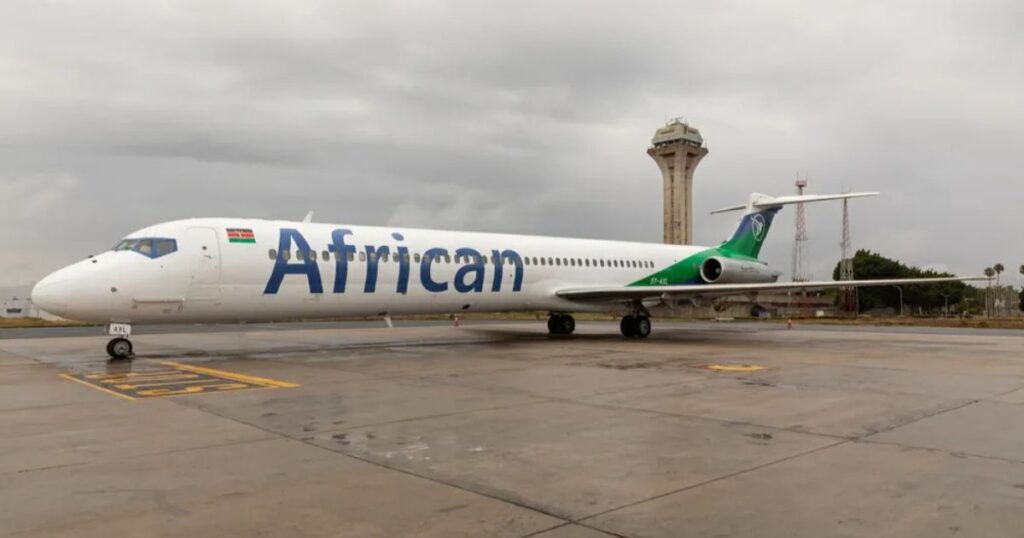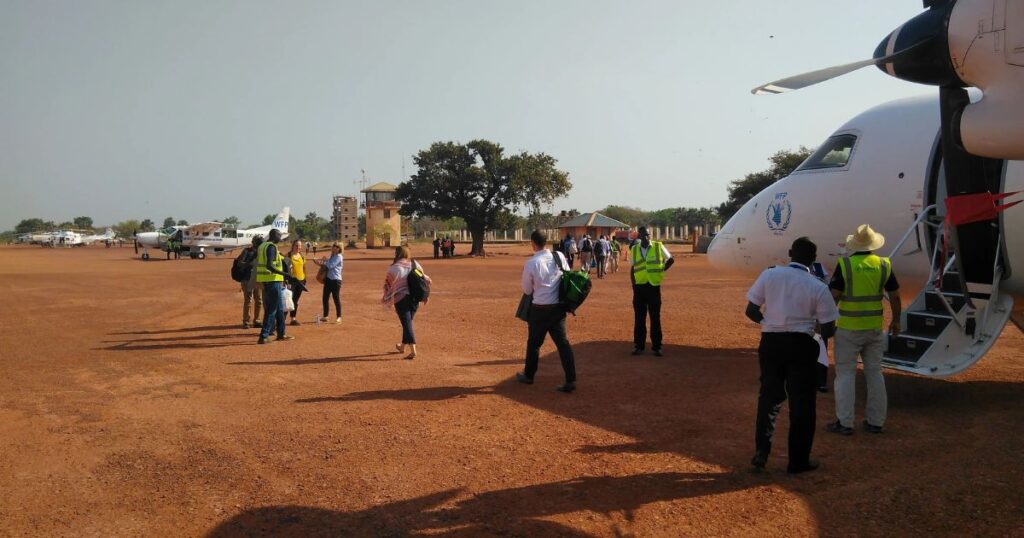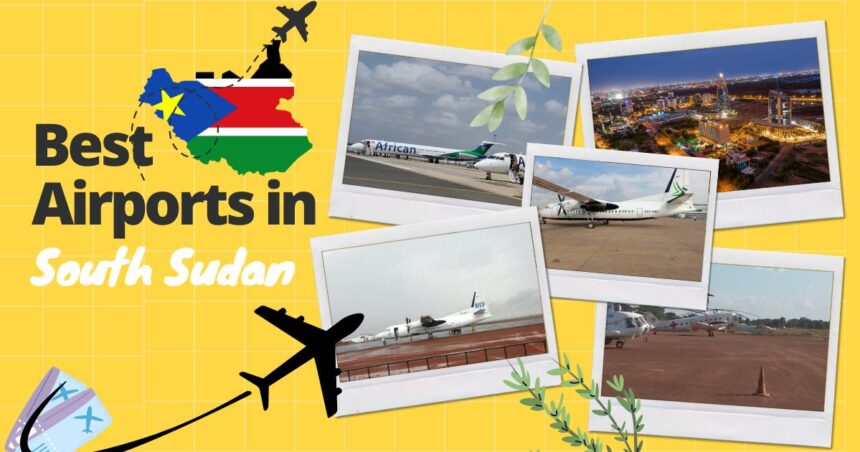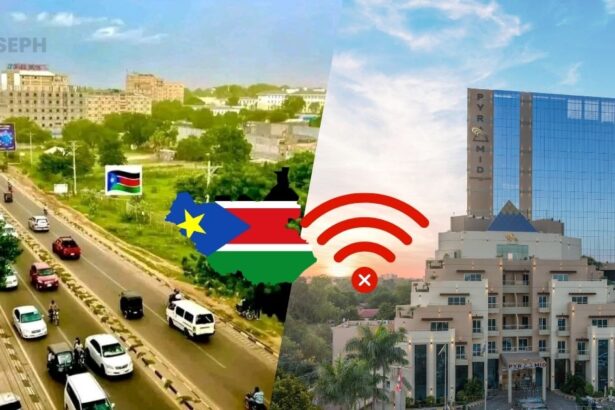South Sudan’s air travel system is growing steadily, playing a key role in connecting people, goods, and services across the country. Airports here are more than just travel stops. They’re central to humanitarian aid, business growth, and regional coordination. This article looks at the five most important airports in the country, based on their traffic, location, and public or humanitarian use.
1. Juba International Airport (JUB · HSSJ)
Juba International Airport is the busiest and most important airport in South Sudan. Located about 5 kilometers northeast of central Juba, it handles both domestic and international flights. It’s the main gateway for travelers, government officials, aid workers, and business cargo.

The airport has a 3,100-meter asphalt runway, which supports large aircraft. Airlines such as Ethiopian Airlines, EgyptAir, and flydubai offer regular routes to cities like Addis Ababa, Cairo, and Dubai. It also plays a central role in humanitarian logistics, used frequently by UN agencies and NGOs for relief missions.
Juba International was once ranked among the worst airports globally. In 2016, it was listed as the second worst by Sleep in Airports, then number one in 2017, and fourth in 2019. Since then, upgrades have been made. A new terminal was inaugurated in October 2018. Facilities and logistics support have improved to handle rising traffic.
Beyond travel, the airport supports trade and regional movement. It connects with neighboring countries and plays a part in linking South Sudan to East Africa. While challenges remain, including congestion and maintenance, Juba International is still the country’s most critical aviation hub.
Let me know when you’re ready to move to the next airport.
2. Malakal International Airport
Malakal International Airport sits about 4 kilometers north of Malakal city, near Upper Nile University. It is South Sudan’s second international airport and plays a central role in humanitarian air operations and domestic travel.

It has a 2,000-meter asphalt runway at an elevation of 393 meters. Although it handles fewer commercial flights than Juba, it remains a vital hub for the United Nations and other aid agencies. Originally built for UNMIS missions, it now continues serving UNMISS cargo and staff flights.
Domestic flights connect Malakal to Juba, usually twice to three times weekly through airlines like Kush Air and Badr Airlines. These routes are essential for maintaining regular access to Upper Nile State, especially in times of flooding or conflict.
Malakal Airport has experienced a few safety incidents. In November 2015, a Hawker Siddeley Andover crashed after takeoff, though the crew survived. In early 2024, separate ground collisions involved aircraft from African Express Airways and Safe Air.
The airport continues to support trade, humanitarian aid, and regional connections. Planned upgrades to facilities and services aim to improve efficiency and better meet increasing demands.
3. Akon/Akun International Airport
Akon International Airport is a new project located in Akon Village, Gogrial West County, Warrap State. It officially broke ground on August 28, 2023, and is expected to be completed by August 2025. The project is led by Wunkoc Engineering and Modern Contractors, a South Sudanese-owned company, with backing from state officials and community leaders.

The airport is planned as a regional hub serving Warrap, Aweil, Unity, Ruweng, Wau, Abyei, and Rumbek. Around 120 trucks and heavy machines are already working on the site. However, construction faced a brief pause in January 2025 due to seasonal flooding. Engineers confirmed the terrain remains viable after an Asian feasibility study reviewed its foundation potential.
Estimated to cost US $15 million, the airport is expected to support passenger travel, humanitarian aid, and regional trade. Roads, clinics, and schools are also being built nearby as part of the broader infrastructure development. Once complete, Akon International will link remote regions to the national transport grid and unlock new economic opportunities.
4. Wau Airport
Wau Airport serves the city of Wau in the northwest. Located about 5 kilometers from the city center, it plays a key role in connecting the region to Juba and supporting aid delivery.
The airport has a single asphalt runway listed at 2,500 meters by several sources, although the South Sudan Civil Aviation Authority notes it as 2,200 meters. Elevation is roughly 433 meters above sea level. Its length is sufficient for medium-range aircraft handling both cargo and passenger operations.
Wau Airport sees about 31 domestic flights monthly, primarily to Juba, mostly operated by Kush Air Uganda. Golden Wings Aviation launched flights in 2014, and Feeder Airlines once ran a Khartoum–Wau–Juba route.
It has long served humanitarian missions, including UN and NGO operations. In 1991, a Lockheed C-130 hit a landmine while taxiing, highlighting its emergency use history. The airport was temporarily closed in 2012 due to local conflict and reopened in December after repairs.
In March 2017, a South Supreme Airlines Antonov An‑26 crash occurred near the runway. These events underscore the need for safety and infrastructure upgrades. Plans are in place to improve the runway and passenger terminal in future development phases.
5. Rumbek Airport
Rumbek Airport serves the capital of Lakes State in central South Sudan, sitting at an elevation of 420 meters. It’s an important airport for connecting Rumbek and nearby towns to the rest of the country, especially Juba and hard-to-reach areas. The airport is about 302 kilometers northwest of Juba by air.

It features a single unpaved runway (01/19), measuring around 1,330 meters (4,364 feet) in length. While modest, it accommodates light aircraft for both civilian and humanitarian use. A small terminal serves passenger and cargo traffic.
Rumbek is the second busiest hub for the United Nations Humanitarian Air Service (UNHAS) in South Sudan. It handles over 100 passengers and 11 metric tons of cargo daily, connecting to more than 20 remote destinations. The airport plays a vital role in aid delivery and staff transport during emergencies or seasonal access issues.
There have been a few notable incidents in its history. In 2003, a Hawker Siddeley Andover crash-landed near the airport. A 2008 crash involving a Beechcraft 1900C tragically killed 21 people. In 2017, a UN flight crew was briefly detained due to visa issues, highlighting the complexities of international operations in the region.
Though small, Rumbek Airport is a critical link for humanitarian logistics and local mobility. Upgrades to facilities and security are expected as its strategic importance continues to grow.
Conclusion
Juba International remains the busiest and most connected airport in South Sudan, serving as the national hub for both domestic and international travel. Still, each airport across the country plays an important role.
Malakal supports the northeast and is vital for UN operations and emergency access. Akon Airport, still under construction, is expected to improve transport across Warrap and nearby states. Wau connects the western region and often supports humanitarian flights. Rumbek links central South Sudan to the rest of the country and is a key UNHAS base.
Together, these airports support mobility, trade, and emergency response. As aviation infrastructure improves, they will continue to shape how people and goods move across the country.







